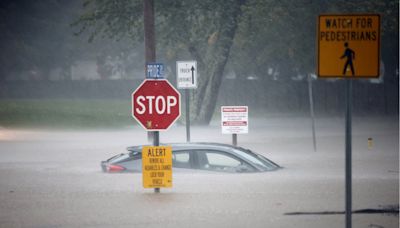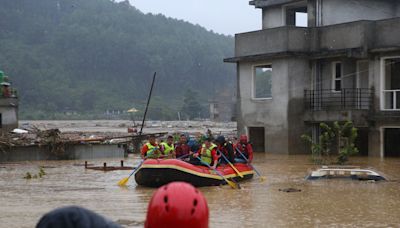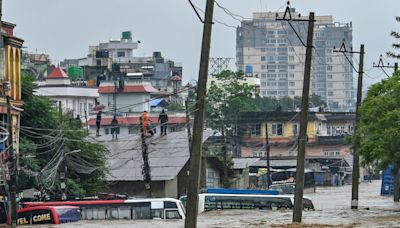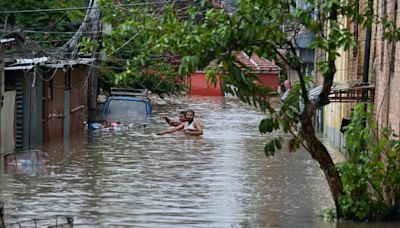Search results
Main article: Causes of landslides. The Mameyes Landslide, in the Mameyes neighborhood of barrio Portugués Urbano in Ponce, Puerto Rico, was caused by extensive accumulation of rains and, according to some sources, lightning. It buried more than 100 homes. The landslide at Surte in Sweden, 1950.
- Overview
- Types of landslides
Landslides occur when gravitational and other types of shear stresses within a slope exceed the shear strength (resistance to shearing) of the materials that form the slope. Short-term stresses imposed by earthquakes and rainstorms can likewise contribute to the activation of landslides. Various processes that weaken the shear strength of a slope may also activate landslides.
How are landslides classified?
Landslides are generally classified by type of movement (slides, flows, spreads, topples, or falls) and type of material (rock, debris, or earth). Sometimes more than one type of movement occurs within a single landslide, and analysis of each requires detailed interpretation of landforms and geological sections.
How can the hazards of landslides to humans be mitigated?
Landslides pose a recurrent hazard to humans in most parts of the world, especially in regions that have experienced rapid population and economic growth. These hazards are mitigated mainly through precautionary means such as restricting populations from susceptible areas, limiting land use, installing early warning systems, and building structures such as piles and retaining walls.
Can landslides be prevented?
Landslides are generally classified by type of movement (slides, flows, spreads, topples, or falls) and type of material (rock, debris, or earth). Sometimes more than one type of movement occurs within a single landslide, and, because the temporal and spatial relationships of these movements are often complex, their analysis often requires detailed interpretation of both landforms and geological sections, or cores.
Rockslides and other types of slides involve the displacement of material along one or more discrete shearing surfaces. The sliding can extend downward and outward along a broadly planar surface (a translational slide), or it can be rotational along a concave-upward set of shear surfaces (a slump). A translational slide typically takes place along structural features, such as a bedding plane or the interface between resistant bedrock and weaker overlying material. If the overlying material moves as a single, little-deformed mass, it is called a block slide. A translational slide is sometimes called a mud slide when it occurs along gently sloping, discrete shear planes in fine-grained rocks (such as fissured clays) and the displaced mass is fluidized by an increase in pore water pressure. In a rotational slide the axis of rotation is roughly parallel to the contours of the slope. The movement near the head of the slide is largely downward, exposing a steep head scarp, and movement within the displaced mass takes place along internal slip planes, each tending to tilt backward. Over time, upslope ponding of water by such back-tilted blocks can enlarge the area of instability, so that a stable condition is reached only when the slope is reduced to a very low gradient.
A type of landslide in which the distribution of particle velocities resembles that of a viscous fluid is called a flow. The most important fluidizing agent is water, but trapped air is sometimes involved. Contact between the flowing mass and the underlying material can be distinct, or the contact can be one of diffuse shear. The difference between slides and flows is gradational, with variations in fluid content, mobility, and type of movement, and composite slide movement and flow movement are common.
A spread is the complex lateral movement of relatively coherent earth materials resting on a weaker substrate that is subject to liquefaction or plastic flow. Coherent blocks of material subside into the weaker substrate, and the slow downslope movement frequently extends long distances as a result of the retrogressive extension from the zone of origin, such as an eroding riverbank or coastline. Spreads occur as the result of liquefaction caused by water saturation or earthquake shock in such substrates as loess, a weakly cemented wind-lain silt.
Special offer for students! Check out our special academic rate and excel this spring semester!
Learn More
The official music video remastered in HD for Fleetwood Mac - "Landslide" from the 1975 album "Fleetwood Mac". Fleetwood Mac’s 50 Years – Don’t Stop is avail...
- 4 min
- 98.6M
- Fleetwood Mac
Apr 26, 2024 · A landslide is the movement of rock, earth, or debris down a sloped section of land. Landslides are caused by rain, earthquakes, volcanoes, or other factors that make the slope unstable. Geologists, scientists who study the physical formations of Earth, sometimes describe landslides as one type of mass wasting.
Learn what a landslide is, what causes one, and how to prepare for and respond to this geologic hazard. Find out about different types of landslides, their effects, and examples from the United States and around the world.
Learn about the natural and human factors that trigger landslides, the devastating consequences of these disasters, and the different types of landslides. Find out how to recognize the warning signs of a potential landslide and how to minimize losses.
Landslides are more widespread than any other geological event, and can occur anywhere in the world. They occur when large masses of soil, rocks or debris move down a slope due to a natural phenomenon or human activity. Mudslides or debris flows are also a common type of fast-moving landslide.






